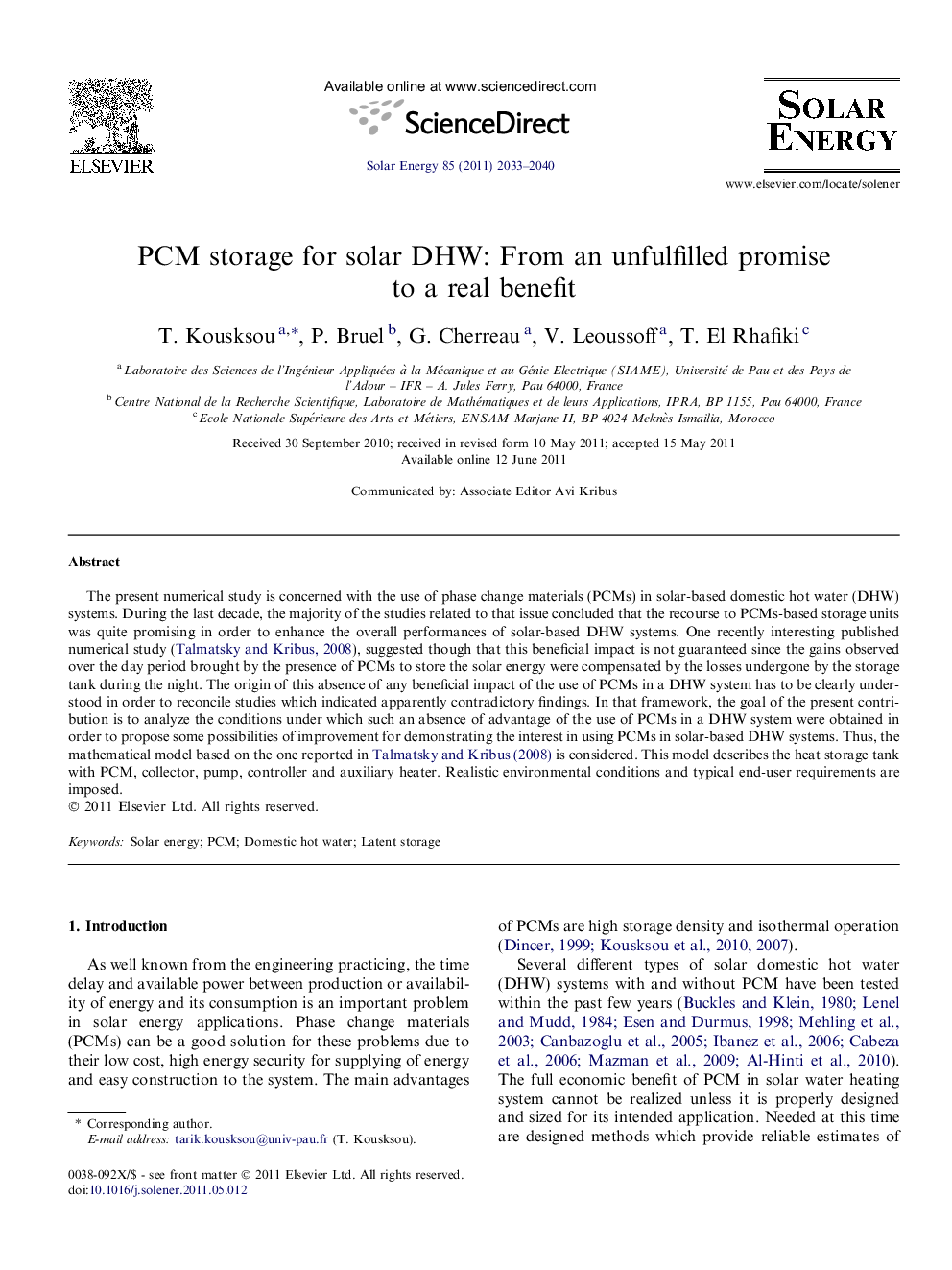| Article ID | Journal | Published Year | Pages | File Type |
|---|---|---|---|---|
| 1551020 | Solar Energy | 2011 | 8 Pages |
The present numerical study is concerned with the use of phase change materials (PCMs) in solar-based domestic hot water (DHW) systems. During the last decade, the majority of the studies related to that issue concluded that the recourse to PCMs-based storage units was quite promising in order to enhance the overall performances of solar-based DHW systems. One recently interesting published numerical study (Talmatsky and Kribus, 2008), suggested though that this beneficial impact is not guaranteed since the gains observed over the day period brought by the presence of PCMs to store the solar energy were compensated by the losses undergone by the storage tank during the night. The origin of this absence of any beneficial impact of the use of PCMs in a DHW system has to be clearly understood in order to reconcile studies which indicated apparently contradictory findings. In that framework, the goal of the present contribution is to analyze the conditions under which such an absence of advantage of the use of PCMs in a DHW system were obtained in order to propose some possibilities of improvement for demonstrating the interest in using PCMs in solar-based DHW systems. Thus, the mathematical model based on the one reported in Talmatsky and Kribus (2008) is considered. This model describes the heat storage tank with PCM, collector, pump, controller and auxiliary heater. Realistic environmental conditions and typical end-user requirements are imposed.
► Physical model is used to describe the behavior of the heat storage tank with PCM. ► Realistic environmental conditions and typical end-user requirements are imposed. ► The melting point has been identified as one of the most important parameters for optimal operation of the DHW system.
